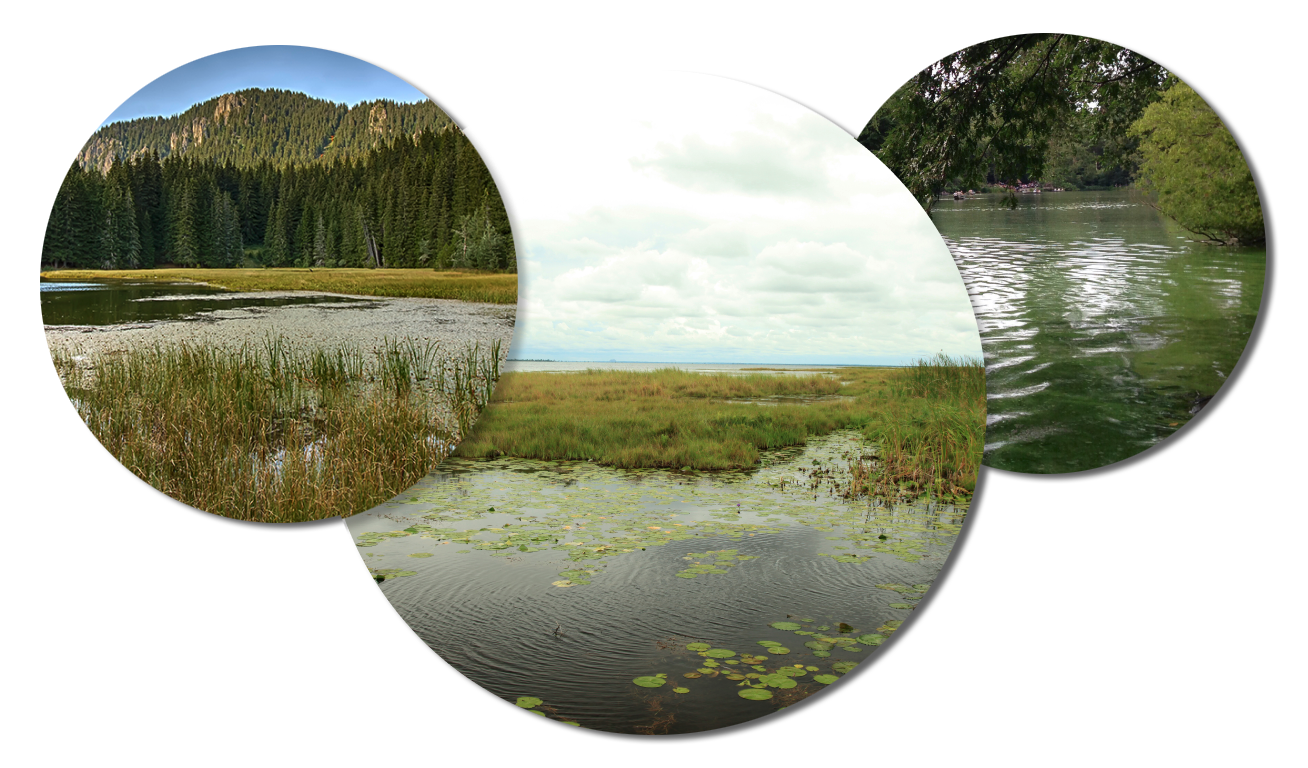Is your lake at risk for harmful algae blooms, too much muck, and fish kills?
Lakes don’t “die” overnight. If you’re here, it’s likely that you’ve got time to turn around your lake into a healthy, thriving ecosystem. Learn the key indicators of lake health and determine if your lake is Healthy, At Risk, In Decline, or In Crisis.
Weeds
A weed or two isn’t a big deal, but if you observe densely packed, invasive species that appear to be taking over the lake, you could be in the At Risk category. If you have a chronic weed problem that isn’t stopped by chemical treatments, your lake could be In Decline.
There are many beneficial types of algae, but algae shouldn’t bloom. A lake where algae blooms are common is definitely a lake In Decline. And a lake with harmful, smelly, and persistent algae blooms is a lake In Crisis!
Muck
Lake muck should be less than 1 ft. When it starts to feel “icky” on the bottom of your feet, your lake is sending you a warning signal! Two feet or more of smelly muck means your lake is likely In Decline. Black, oily muck with odor is a clear sign of a lake In Crisis.
Water Clarity
This measures the depth at which your water remains clear. When you take your kayak or fishing boat along the shoreline, can you see down at least 10 feet? What about when you’re swimming, can you see clearly where your feet touch the bottom of the lake? Water clarity should be at least 10 feet in a healthy lake. If you can only see down about 6ft, or less, your lake could be In Crisis.
Wildlife
Critters could be sending you a signal about your lake’s health. While regular fish kills are an obvious sign of crisis, there are more subtle signs of declining lake health that you may already be observing. How has the fishing been for the past five or ten years? Have you noticed a decline in fish, or other aquatic wildlife, like turtles? When you do catch fish, are they big and healthy or small and sickly? If you’ve just moved to your property, talk to your neighbors to find out the trend among the wildlife in your area.
Phosphorus and Oxygen
Let’s say you’ve ordered a water quality testing kit. The two most important measurements are your levels of phosphorus and dissolved oxygen. In a healthy lake, phosphorus levels should not exceed 20 parts per billion (PPB) or .020 mg/L. Levels above this number may signal that your lake is At Risk, or In Decline. If phosphorus levels are over 80 PPB or .080 mg/L, we consider that a lake In Crisis.
Dissolved oxygen levels should be high all the way to the bottom of the lake. If your oxygen is depleted in deeper areas of your lake, especially during the late summer, your lake could be experiencing nutrient overloading. If dissolved oxygen is low even in shallow areas of your lake, you could have a lake health crisis on your hands!
Download our free, complete graphic, “Is My Lake At Risk” to see more details about diagnosing lake health to keep your lake in great shape, or get it back on track.

Is My Lake At Risk?

